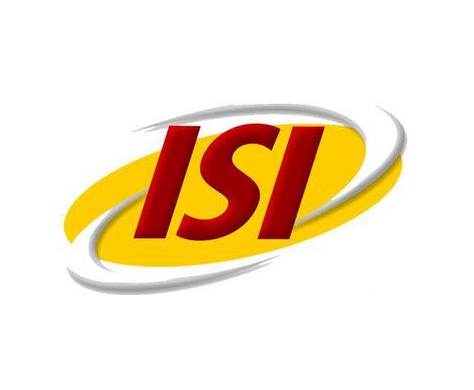دانلود رایگان مقاله لاتین حمایت نوآوری نقشه برداری از سایت الزویر
عنوان فارسی مقاله:
استاندارد سازی استراتژیک سیستم های هوشمند: یک فرایند نقشه برداری در حمایت از نوآوری
عنوان انگلیسی مقاله:
Strategic standardisation of smart systems: A roadmapping process in support of innovation
سال انتشار : 2016

برای دانلود رایگان مقاله حمایت نوآوری نقشه برداری اینجا کلیک نمایید.
بخشی از مقاله انگلیسی:
2. Literature review
The most commonly used definition of standards is provided by the International Organisation for Standardisation (ISO), which defines a standard as“… a document, established by consensus and approved by a recognised body, that provides, for common and repeated use, rules, guidelines or characteristics for activities or their results, aimed at the achievement of the optimum degree of order in a given context” (ISO/IEC, 2004; cited in Andersen, 2013, p. 80). Standards and standardisation are explored in various domains and disciplines with different perspectives (Lyytinen et al., 2008; Narayanan and Chen, 2012). In the following sections, we give a brief overview of selected academic and practice literature, focusing on important standardisationrelated factors to be accounted for in strategic foresight analyses for technological innovation. In particular, we draw on this review to develop insights and an initial conceptual framework for structuring our case study analyses of standardisation roadmapping activities in smart systems. 2.1. Roles of standards and standardisation The systematic perspective on innovation has made many scholars and policymakers aware of importance of standards as powerful institutional mechanisms that shape technological change and innovation; a variety of roles and functions of standards in innovation are thus emphasised by various innovation literature (Porter, 1990; Lundvall, 1992; Ehrnberg and Jacobsson, 1997; Smith, 1997; Allen and Sriram, 2000; Tassey, 2000; Bergek et al., 2008; Swann, 2010; NSTC, 2011). By providing a systematic and integrated perspective of understanding activities and key factors that influence innovation (Edquist, 2001), the ‘functions’ of innovation systems approach appears to be particularly useful in analysing the innovation roles of standards in a structured way. Focusing on dynamics of what is actually happening in overall innovation systems, it can also help identify potential system failures, providing rationales for policy interventions in strategic management of standardisation. By looking at how standards are accounted for in literature adopting functions of innovation systems, it is noted that standards are particularly linked to certain functions proposed by Bergek et al. (2008): legitimation, influence on the direction of search, development of positive externalities, and knowledge development and diffusion. Other literature discussing standards in the context of innovation are also reviewed, and factors corresponding to these functions are identified for coherent analyses on various roles and functions provided by standardisation in supporting innovation systems. 2.1.1. ‘Legitimation’ function of standards Legitimacy is considered to be a prerequisite for new innovation systems to occur, providing it with appropriateness and desirability so that resources are mobilised and demand is formed (Bergek et al., 2008). Standards provide this legitimacy in two main ways. First, acting as signposts, they reduce social uncertainty and stimulate interactive learning activities by providing and communicating necessary information (Lundvall, 1992; Van de Ven, 1993; Edquist and Johnson, 1997). They not only reduce innovators' uncertainty about the future, encouraging them to engage in innovation, but also increase buyers' acceptance of, and confidence in, new technologies, thereby facilitating market growth and allowing subsequent innovation (Foray, 1998; CIE, 2006; Blind and Gauch, 2009; Swann and Lambert, 2010; European Commission, 2011). Second, a consensus process of setting standards increases social acceptance, by managing and mitigating conflicts that may arise between different approaches (Carlsson and Stankiewicz, 1991).
برای دانلود رایگان مقاله حمایت نوآوری نقشه برداری اینجا کلیک نمایید.
کلمات کلیدی:
Handbook of Innovation and Standards: https://books.google.com/books?isbn=1783470089 Richard Hawkins, Knut Blind, Robert Page - 2017 Großmann, A.-M., E. Filipović and L. Lazina (2016), 'The strategic use of ... E. (2016), 'Strategic standardisation of Smart systems: roadmapping process in ... [PDF]Strategic approach to System Integration, Interoperability ... - EPoSS https://www.smart-systems-integration.org/.../Perspectives%20of%20Smart%20System... System approach by IEC TC 91 (Assembly Technology). IV. Steering ... Strategic approach to standardization. 11. 03. 2015. 2 ... Smart Cities. • Smart Home. [PDF]Strategies and Recommendations for Smart ... - European Commission https://ec.europa.eu/energy/.../iee.../e-track_ii_strategies_and_recommendations.pdf „Smart Domestic Appliances in Sustainable Energy Systems ..... sources, policy makers, consumers and their representation, standardisation organisa- tions and ... [PDF]IEC Smart Grid Standardization Roadmap - International ... www.iec.ch/smartgrid/downloads/sg3_roadmap.pdf Jun 2, 2010 - Prepared by SMB Smart Grid Strategic Group (SG3). June 2010 ..... Smart transmission systems, Transmission Level Applications ..................39. Smart system | Ministry of Health NZ www.health.govt.nz › NZ health system › NZ Health Strategy: Future direction Apr 15, 2016 - ... on the smart system theme of the New Zealand Health Strategy. ... using standardised technology that allows us to make changes easily and ... German Standardization Strategy - Deutsches Institut für Normung www.din.de/en/din-and-our-partners/din-e-v/german-standardization-strategy On this page, you can find the German Standardization Strategy as approved by ... Standards and conformity assessment systems that are applied consistently ...
